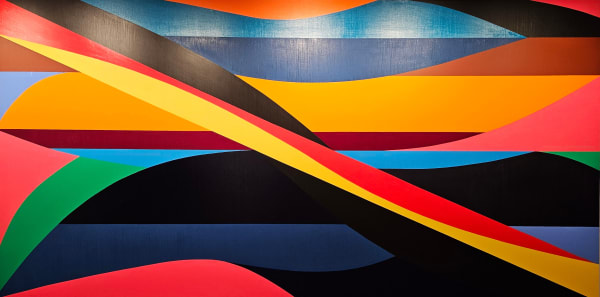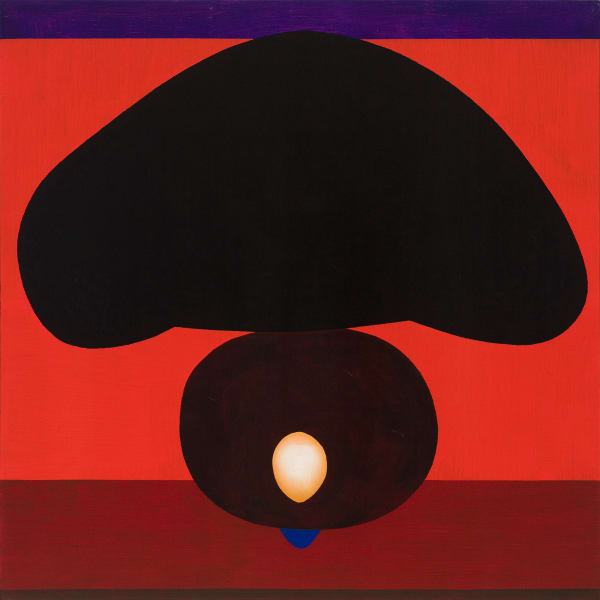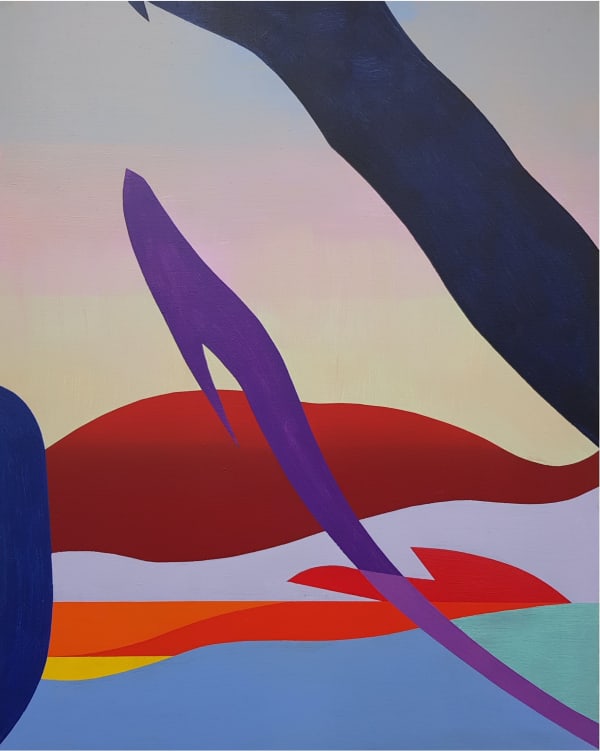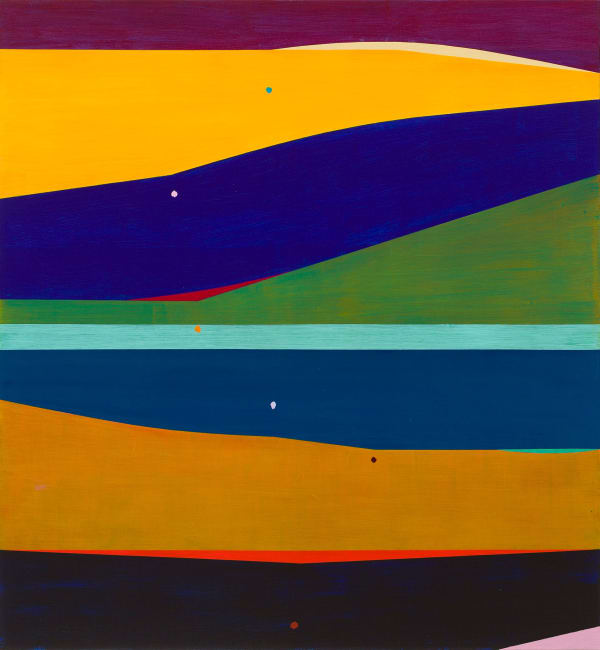Selected Paintings from the Artist's Studio: Michael Johnson
I want the impact to engage the senses, play with time and spacial awareness. My painting is not an object capturing scenery; it is a sensory experience in its own terms’.
Michael Johnson grew up surrounded by art; both his parents were painters and there were framed prints of Vermeer and Albert Pinkham Ryder hanging on the walls of his childhood home in Mosman. Leaving school at fourteen he worked at the Lintas agency, rambled around rural NSW on painting trips with close friend Brett Whiteley and studied at the Julian Ashton ArtSchool and the National Art School in Sydney. In 1960, he decided to travel and departed by ship passing through Egypt, Greece and Italy on route to London. Hemet Whiteley in Florence and together they decided to travel to Bologna to visit the studio the Italian still life painter Giorgio Morandi. When he eventually arrived in London he spent the next seven years painting full time while also working as a studio assistant to the British sculptors Brian Walland Anthony Caro. While living in London he immersed himself in the art world and was introduced to Francis Bacon, David Hockney and Oskar Kokoschka. Unlike other Australian artists who found international success through figurative and semi abstracted landscape (notably Sidney Nolan and John Olsen) Johnson’sEuropean experience distilled his love of colour, space and form into highly distilled abstract works. His return to Sydney in 1967 contributed to a generational shift towards minimal geometric abstraction that was reflected in his first solo show at Gallery A and the ground breaking exhibition ‘The Field’ in 1968.
Mixing his own pigments and stretching his own frames to generate unique shaped canvases, these minimal works were characterized by large areas of flat, solid colour creating unbroken surfaces with no emphasis on gesture or brushstroke. His purpose was to eliminate recognizable imagery in favour of abstraction and to build a unique fusion between architectonics, sculpture and painting. Inspired by the work of Quattrocento Italian painters, the organic forms of Constantin Brancusi, the frontal drama of Albert Albers and the colour and scale of Henri Matisse, his work in the late 60s was a uniquely Australian interpretation of a major global shift away from representation. Moving to New York in 1970, the work of the next decade gradually came to embrace more surface texture and a palette that became more and more identifiable with a ‘bush spectrum’. By the time he reached NorthQueensland in 1979 he became interested in the diversity and ecology of the environment, looking at the intense and complex relationships within nature. Many things triggered his inspiration: his appreciation of form, the colours on bird feathers, and the reflecting metallic hot-rod colours on beetle wing covers.The symmetrical patterns on butterfly wings, leaves, mammals, reptiles, fishbones and birds eggs, everything was absorbed, remembered and used in his art.Colour and light have remained a lifelong preoccupation and Johnson links every major shift and phase of his work to natural influences: fallen branches on a bush floor, floating leaves on a moving river, and how light from the sun reflected on different water surfaces, especially in the ocean. Many of Johnson’s large nocturnal and oceanic blue works evoke a personal memory of staring through the sea water on a dark night and marvelling at the phosphorescence and the bioluminescence of the organisms swimming in the sea:
‘Probably the strongest influence that brought about the metaphor of water, darkness and skies was the mystery of fishing at Lobster Beach at Broken Bay’ Other shapes created by nature continue to interest him, like the empty seashells washed up by the tide and scattered on the beach, the natural debris deposited along strand lines by the waves and the tide as the water recedes back into the ocean. As his paintings became more painterly he also began to analyse the environment, identifying the elements that contribute significantly to each other. The style which he has become most recognised for is distinguished by ultra-thick impasto multi layered paintwork and rich complex use of colour. These textural paintings full of controlled energy are constructed with heavily imposed layers of colours that he describes as ‘zones’.
The horizontal zones of colour which divide his paintings evoke the layers of recycled life, cycles of light throughout the passage of a single day and contrasting elements such as fire and water, earth and air. The impulses come from landscape but they are not landscapes in the literal sense. As he has said, ‘these are paintings are not to be viewed and considered in the interpretative way, they must be explored as a visual experience.’ When interviewed after winning the prestigious 2014 Wynne Prize for his painting Oceania high low, he said ‘the work pays homage to the origin myths of Oceania, particularly the Maori legend of the sky and earth being separated to admit the light of day. Landscape is so often signalled by the division of sea and sky but this work deals with convex space rather than a conventional horizontal perspective. With a wider scale and a paler palette, I explore the inverted geology under the sea or the unmapped strata of clouds’.
Oceania high low was an epic mural scaled painting that signalled yet another shift in Johnson’s work away from gestural paintwork and towards a flatter surface and brighter key or palette. Over the span of fifty years of painting, some might observe that his work has come full circle and is now currently exploring the sculptural properties of colour and the symbolic power of forms. Linking every phase and making sense of the contrasts, is a deep ongoing conversation with colour. Michael Johnson is a colourist who never tires of the “energy and crackle” of the spectrum. Whether working on a small rice paper drawing, slicing into a collage of calligraphy, sketching in pastel or drawing up a vast mural with faint charcoal lines on raw canvas, every work has a definite underpinning based on his own highly evolved ideas about geometry. The spontaneity of every line pivots on a structure. And while many look to Johnson to find a link to the landscape he stresses that his work is primarily abstract: ‘The experience of the painting’ he argues, is the painting. I want the impact to engage the senses, play with time and spacial awareness. My painting is not an object capturing scenery; it is a sensory experience in its own terms’.









